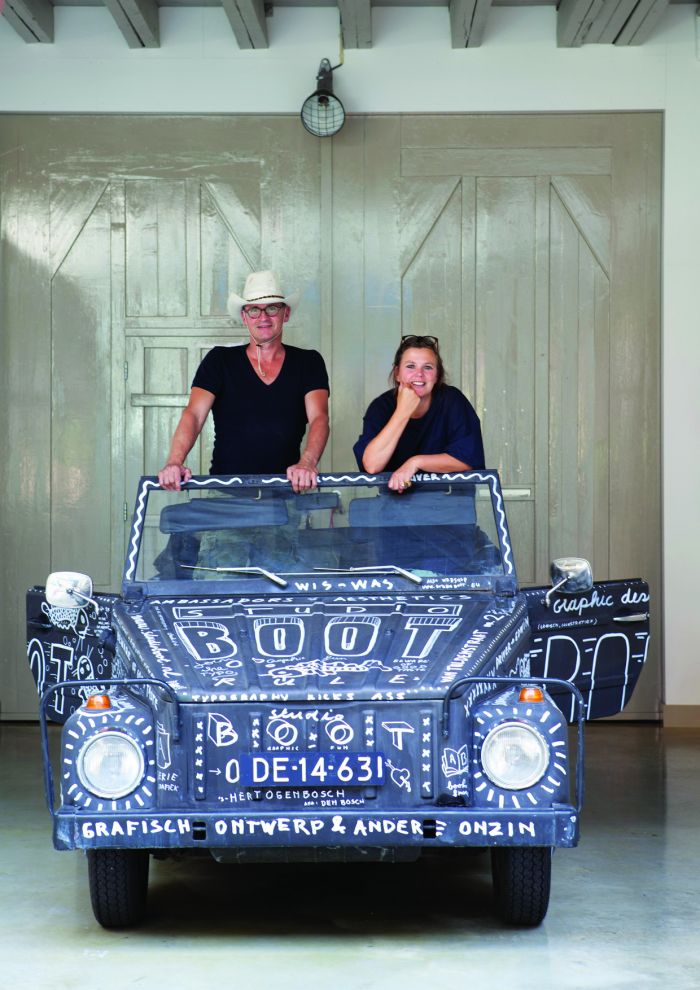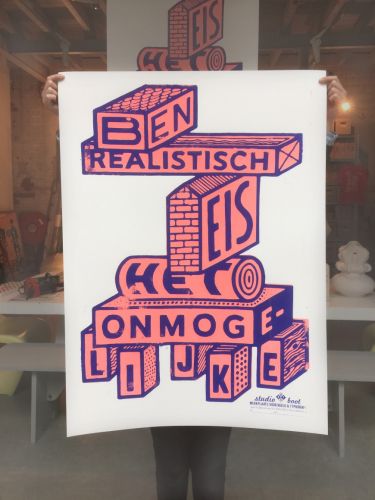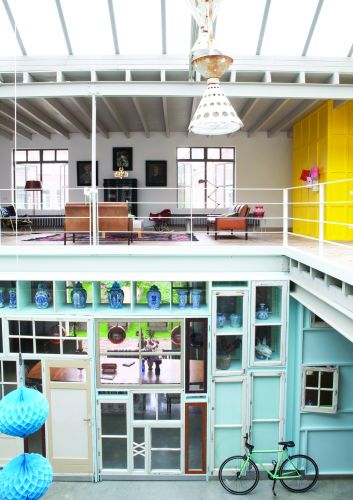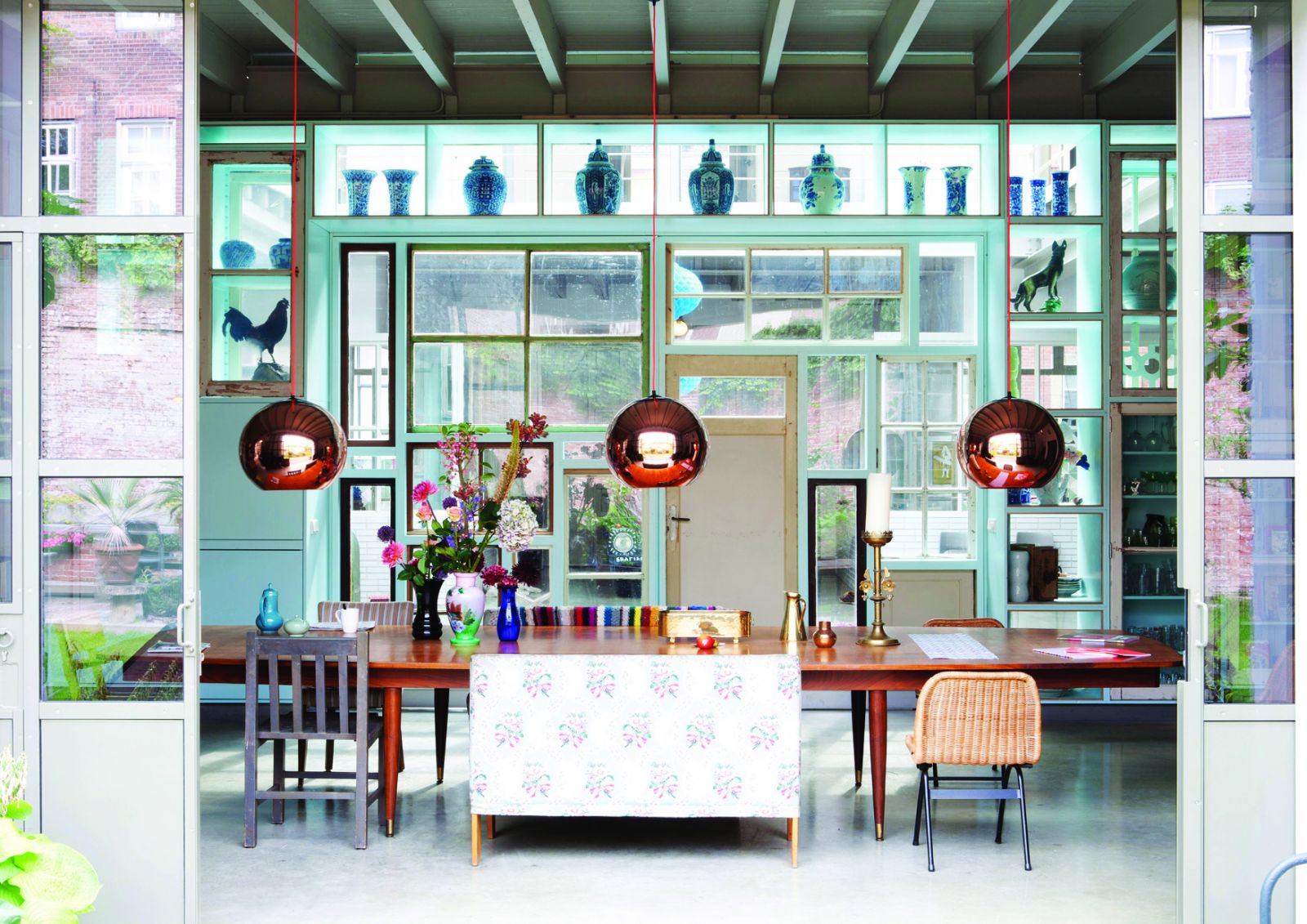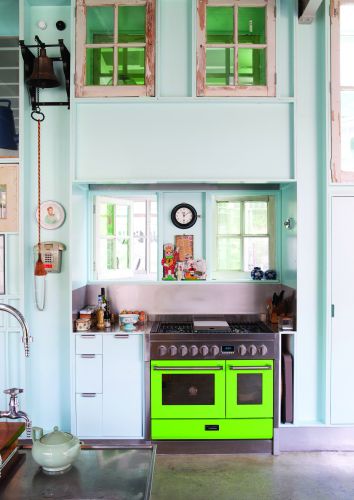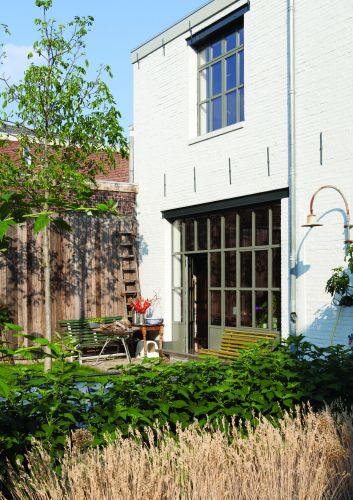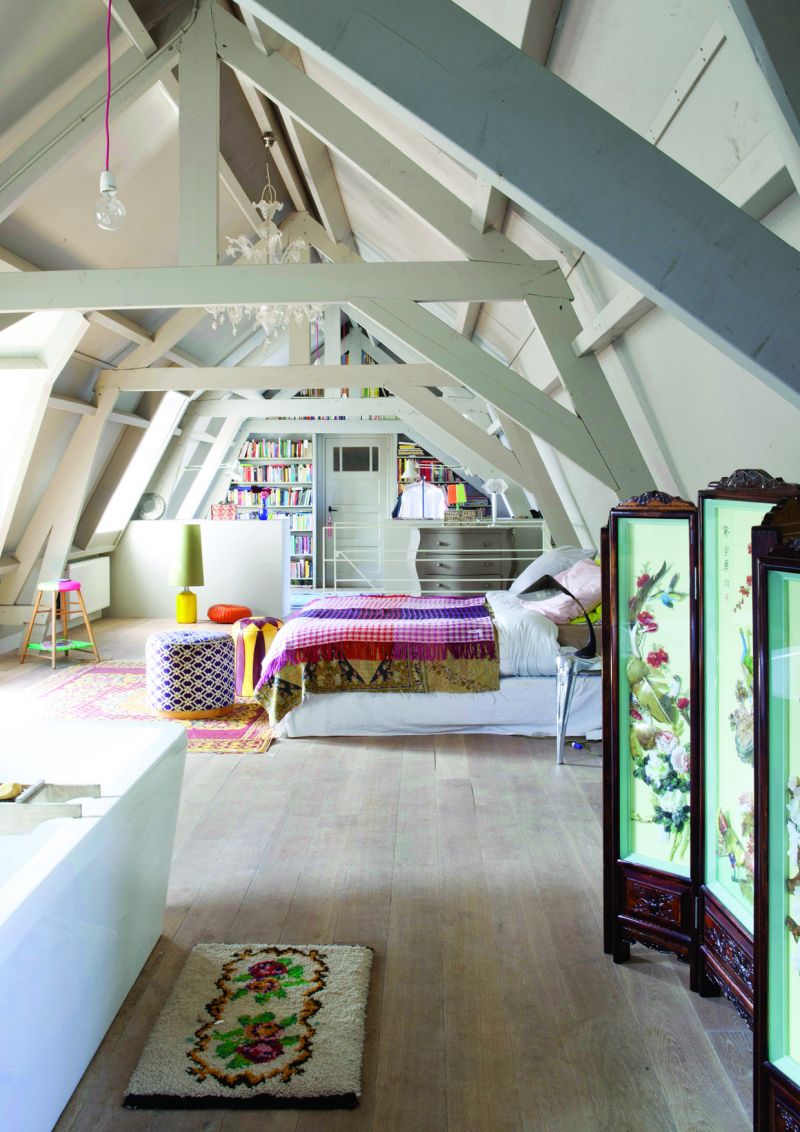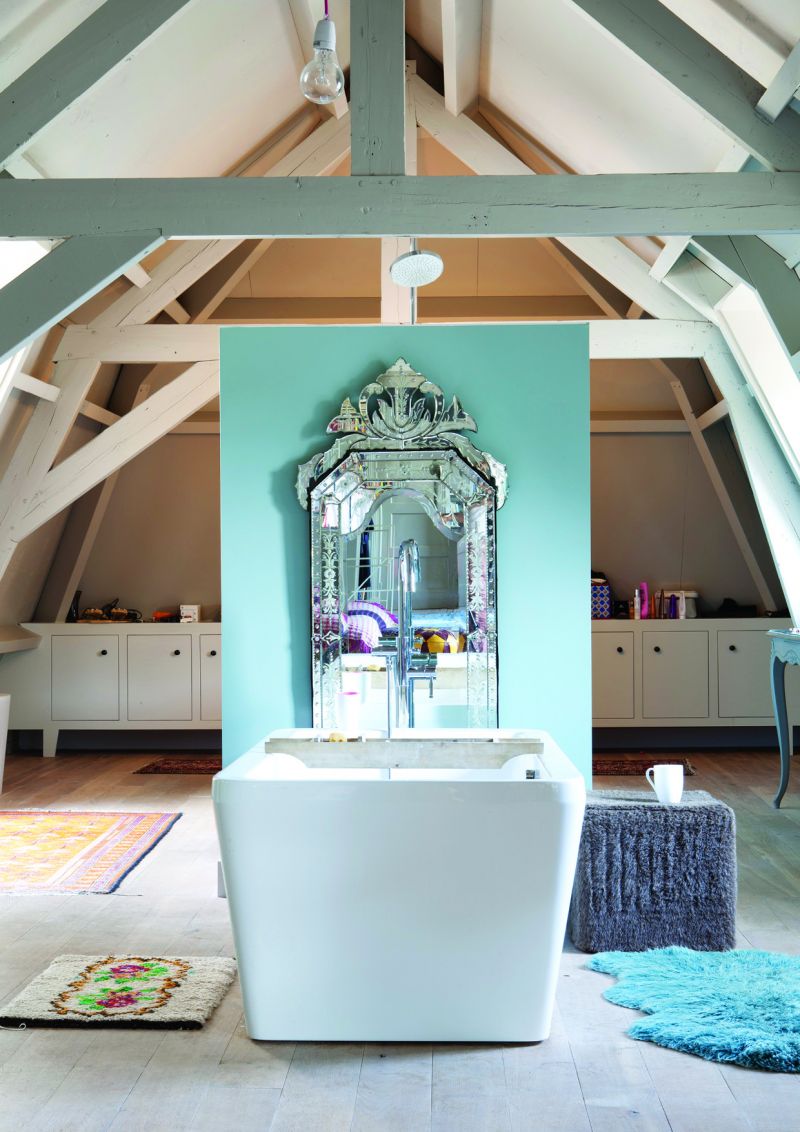SKYLIGHT
There’s no shortage of space in the former garage that Janssen and Vollebergh renovated in 2006. The entrance is in the middle behind large garage doors. On either side are two studio spaces, with windows all around. The heart of the building is a large rectangular skylight, a two-storey atrium. On the ground floor there’s a kind of play area with a library on one side and a screen-printing area on the other. The transition between workspaces and kitchen living room can be closed off with a large wall made from doors, windows and cupboards, designed by Piet Hein Eek. Together with Vollebergh, he also designed the large steel doors that lead from the kitchen to the garden, which is shielded from the outside world by a big high wall of old brick, and breathes the tranquil intimacy of a convent’s court in the centre of town. Janssen and Vollebergh are very sociable people, who in their free time love to bring friends and guests together around a big table. Their style is warm and open-minded. After about 25 years in the design business, they started to look for ways to pay it forward. In 2015 Social Label came into being, for the local production of design products by special-needs people. To present and sell those products they subsequently founded the ‘Werkwarenhuis’ (work department store). Not long ago, Queen Maxima came by for a visit.
